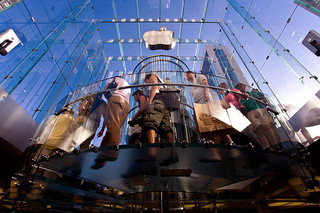
There are many theories of consumer purchase cycles and event marketing ROI. Some are overly complicated and others overly simple. As a team of market researchers specializing in the measurement of event marketing, we find it our business to study these cycles and see how they prove out in practice. (And we’ve had a fair bit of practice measuring event marketing.)
We’re certainly fans of P&G’s Moments of Truth insights and appreciate Google’s Zero Moment of Truth addendum. We also appreciate the role of early adopters in a brand’s marketing effort. However, we find the most measurable and meaningful approach is based on a PortMA customized consumer purchase cycle with four stages:
- Need
- Awareness
- Trial
- Purchase
1. Need – Are they even in your market?
At the Need stage of the consumer purchase cycle, we’re trying to determine if the problem the brand solves is even a need consumers know they actually have. Granted, they may have the problem, but not know it. Often this relates closely to the brand demographic/ psycho-graphic targeting.
Basically, if we’re measuring awareness of the brand and the consumer had never heard of the brand before the event, it’s safe to assume they’re stuck in the Need stage.
2. Awareness – Are they aware of the brand but never purchased?
At the Awareness stage, we can safely assume that consumers have, or can at least relate to, the problem the brand solves because they have heard of the brand before.
However, they’ve never taken the plunge and purchased for themselves. This tells us the that consumer is in the Awareness stage of the consumer purchase cycle and needs to better understand the lifestyle or feature benefits before they’re willing to give the brand a shot.
3. Trial – They’ve purchased, but not within the most recent cycle.
These are the lost or “lapsed customers” as we’ve heard them referred to by brand managers. They’re the folks who tell you they’ve tried the brand before, but not recently. For some reason, they didn’t adopt the brand as their preferred option.
4. Purchase – These are your current customers.
These are the consumers who purchased the brand with their most recent category purchase or within the typical consumer purchase cycle window.
They are great for propping up your advocacy and future purchase intent numbers but don’t contribute a dime to the marketing return-on-investment, because you can’t successfully argue that they wouldn’t have purchased anyway.
Summary
These four stages define the marketing challenge. They define where consumers are stuck and what the marketing campaign has to do to move them down the path to purchase.
Photo Source: http://farm2.staticflickr.com/1125/1433279207_a445823154_n.jpg

Additional Resources
FOR EXPERIENTIAL MARKETERS
- Experiential Measurement Blueprint
- Event Impression Calculator
- Experiential ROI Benchmarking Reports
- Event Measurement Video Tutorials
